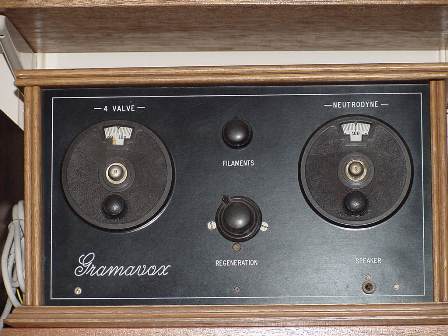
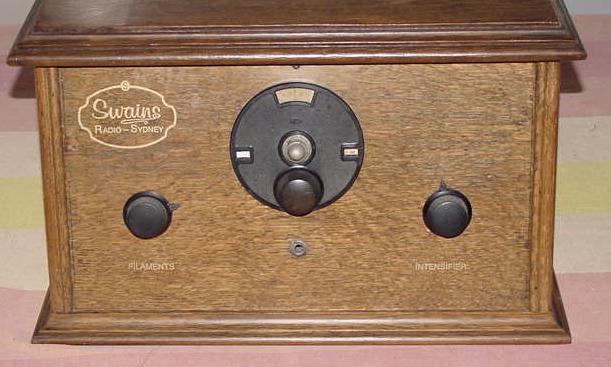
Here are some photos of part of my radio collection.
These radios have been
minimally restored, are in good working order and cabinets are in excellent
condition.
For more information please Email
or phone 02 94821362.
Sydney pickup only.
 |
When I first started collecting radios about 10 years ago I had great
difficulty obtaining coffin sets so I decided to make one. The result
was a radio that works well (for what it is), uses all the old
techniques and looks the part |
 |
This is a very basic battery powered TRF with regenerative detector and
two audio stages. The manufacturer is unknown and it appears that it was
rebadged to Swains Radio Sydney - music publishers of many years
ago.
|
| Gramavox 4 valve neutrodyne circa 1995. | Swains 3 valve 1925 regenerative receiver. |
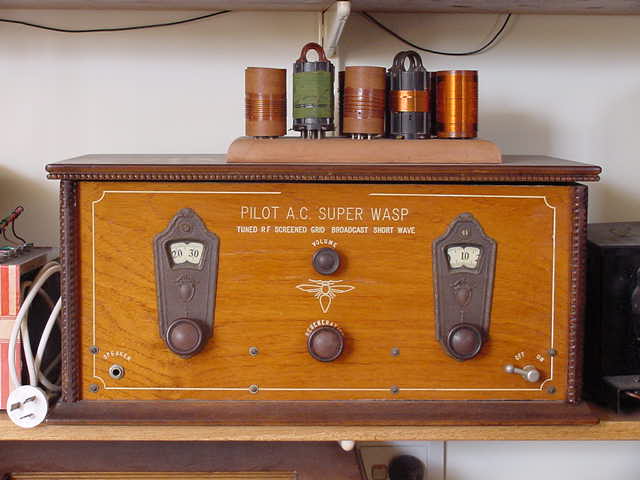 |
This 4 valve radio uses one UX224 screen grid valve and three UX227 triodes. Plug in coils allow coverage of the broadcast and shortwave bands. Regeneration is also employed to maximise performance. |
 |
This speaker is popular with radio collectors and it is rare to find one of these with tapestry and cast papiermache frame intact due to the ravages of time and moisture. |
| Pilot AC Super Wasp circa 1929 | RCA 103 "Tapestry" moving iron loud speaker circa 1929 |
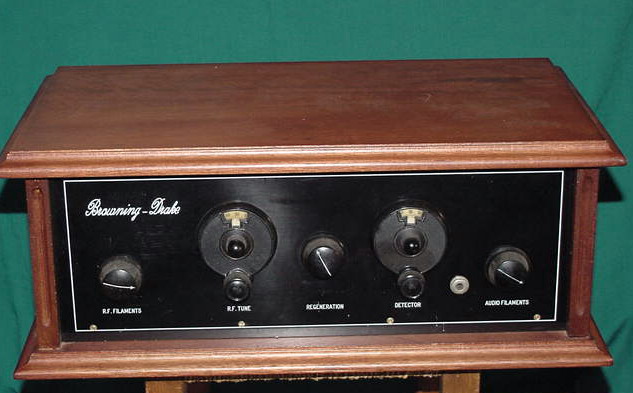 |
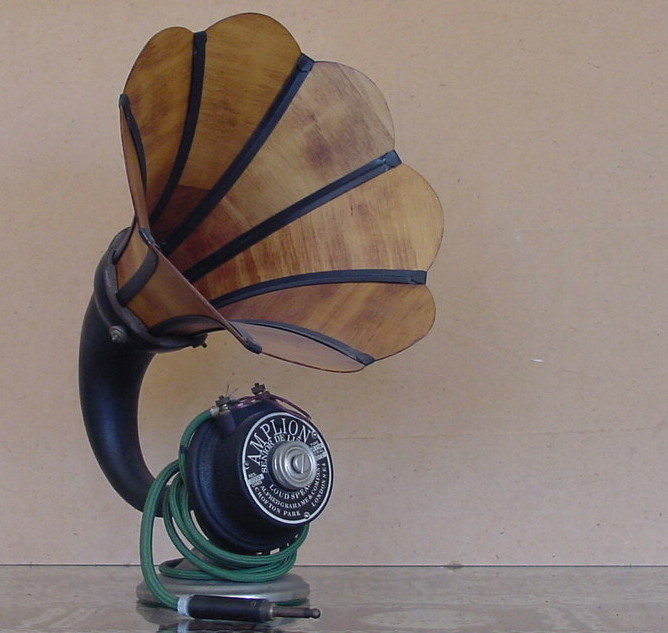 |
Amplion horn speaker with its new repro driver. | |
| Reproduction of 1926 Browning Drake 4 valve regenerative receiver. | Amplion AR114 loudspeaker circa 1925. |
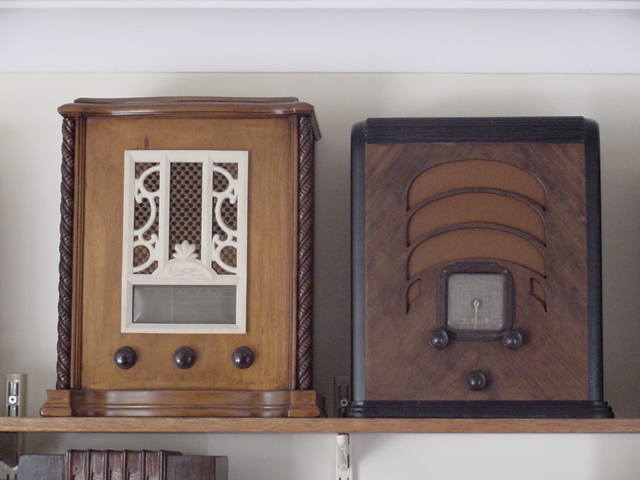 |
Radio star with mystery cabinet. |
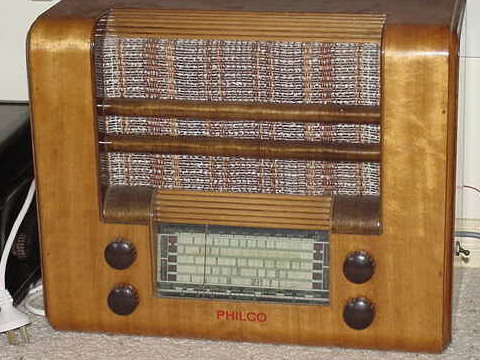 |
Philco radio with 6v vibrator and 2v battery valves. |
| Airzone "Radio Star" and Lekmek | Philco vibrator radio. |
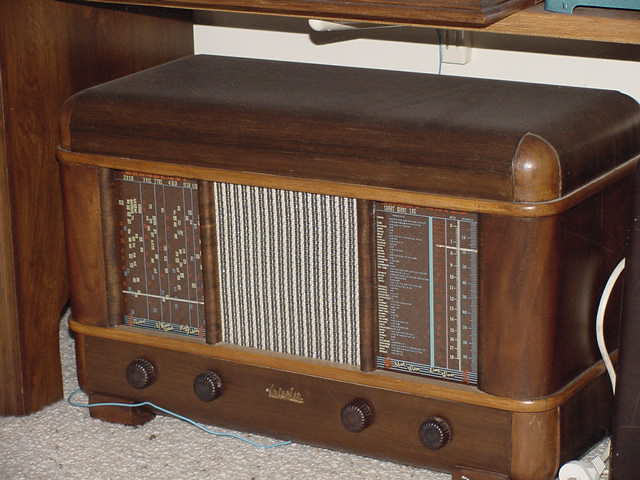 |
This radio has Krieslers unique 2 piece fully enclosed cabinet.
|
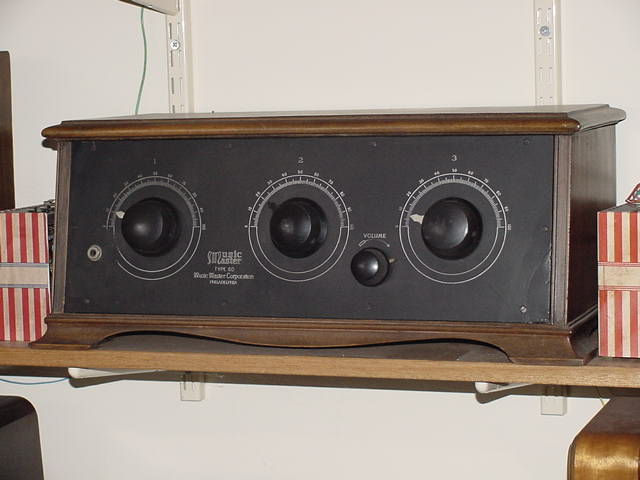 |
MusicMaster 1925 American 5 valve TRF battery radio. Music Master Corporation started business soon after the turn of the century making horn flares for gramaphone manufacturers. Many thousands of these were made up to 1925 when they decided to start making radio sets. Unfortunately technical problems with their designs reduced their sales drastically and with the looming great depression forced them into receivership in 1926. |
| Kriesler with "egg shell" cabinet | Music Master 1925 5 valve TRF. |
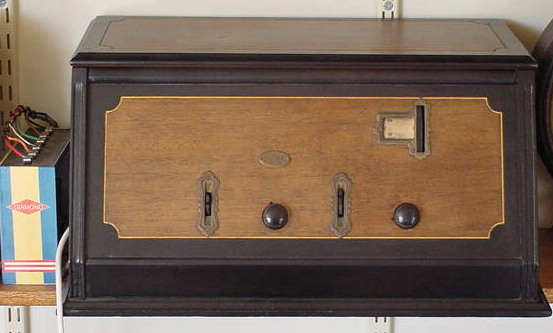 |
The Crosley 5-50 is an American 5 valve battery powered
regenerative TRF receiver with pancake coils and ganged tuning capacitors. This was a very early attempt to simplify the tuning
procedure by having only one knob to adjust instead of three. Straight
through shafts connected the capacitors. together with a drum dial also fitted
to this shaft. Two trimming caps. on the front panel allowed alignment
of the three tuned circuits.
After doing extensive work on the coils, replacing audio transformers, and a new set of valves the set works very well. The reaction control is smooth in operation and the leaky grid detector is surprisingly free of distortion.
|
| Crosley Model 5-50 1926. |
 |
If physical weight has anything to do with the quality of a radio
this would have to be the worlds best. It was designed and manufactured
in Holland and weighs in at 20 Kilos!! Restoration required replacement
of all the paper capacitors and rectifier valve all other valves were
original and OK. Performance is good in regards to sensitivity and selectivity, for a TRF, and a credit to Dutch designers of the 1920s. Valve lineup: Two E442 s RF stages, E424 det. and audio amplifier., C453, audio output., 506 rectifier. Two outputs are available to allow use of hi or lo impedance speakers. |
| Philips Model 2510 5 valve TRF 1929 |
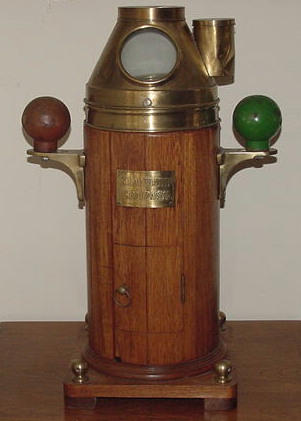 |
|
| What? A binnacle amongst a radio collection? Sure, well at least I like it. I consider it an interesting relic of World War II. These were manufactured be E. Esdaile & Son (Sydney) in 1941 for use in Merchant Ships, the American Small Ships force and other places.* | * From long retired Newcastle Dockworker. This binnacle follows the classical design of some one hundred years ago. It consists of a gimbal mounted standard ships compass, port and starboard soft iron hollow balls and Flinders bar for canceling out magnetic errors resulting from the steel in the vessel, and provision for illuminating the compass rose. |
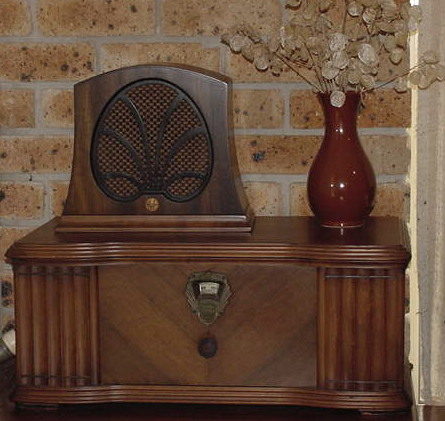 |
This is my favourite radio. Made by AWA in 1929 Model C64A/84 it is a 7 valve TRF set using 227s RF and DET, 71A output and 280 rectifier. Single knob tuning is achieved by drums on each of the tuning caps being driven by spring steel belts, a trimming capacitor is used on the aerial coil to maintain alignment with different aerials. |
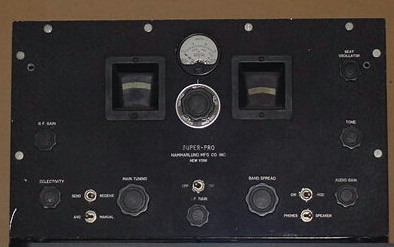 |
This is an early version of the highly esteemed
Hammarlund Super Pro SP200 series of communication receivers. It
has 18 valves and is a single conversion superhet. with separate power
supply and speaker.
When received I found many capacitors leaky so a complete re-capping was required. Having done this and repaired the slipping friction drives and a bit of work on the power supply the set performed very well. I still use it for listening around the short wave bands. |
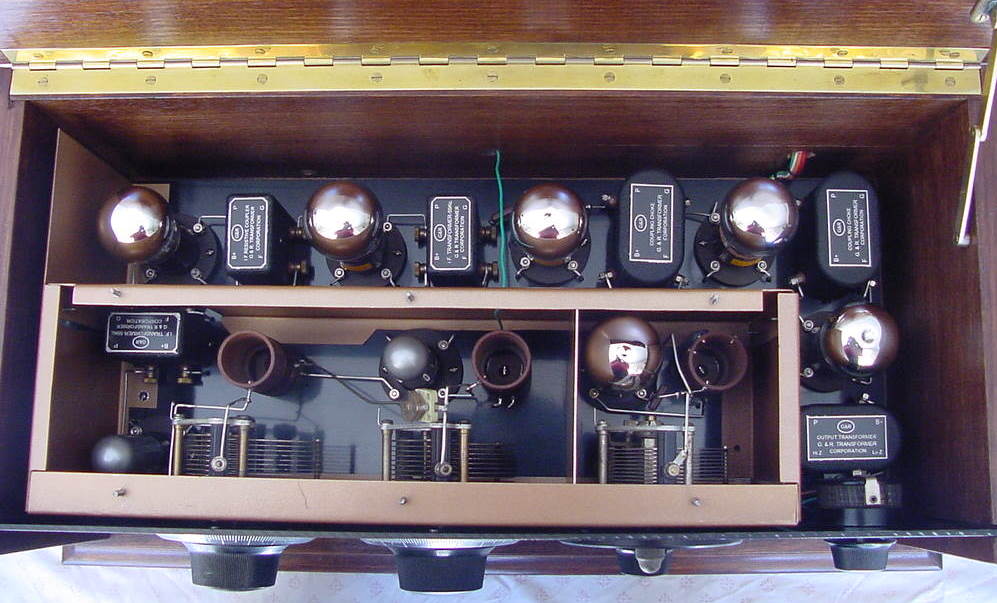 |
This is the "business end of the Graymavox 8 valve all
triode superheterodyne.The cover plate has been removed to show the RF
section. For more information go to G J s Radios. |
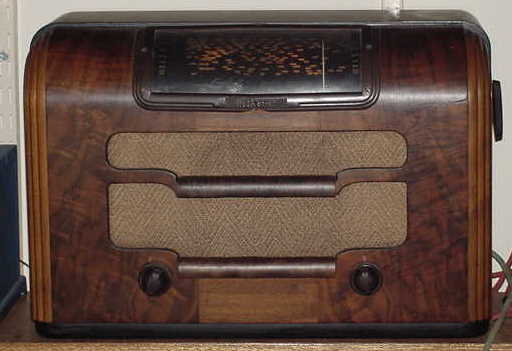 |
These radios were built by A.W.A for Australian General Electric and
marketed under the brand name "Hotpoint Band Master". They were dual
wave with two speed tuning to facilitated use on the the short wave
band.
Hotpoint Bandmaster A55DE
|
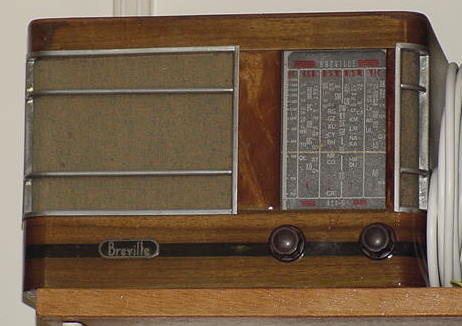 |
These are miniature radios manufactured in the early 1940s. The Breville (ACE-5) and the Astor have very attractive art deco wooden cabinets. The bakelite is a Kriesler model 3K06A dual wave radio. |
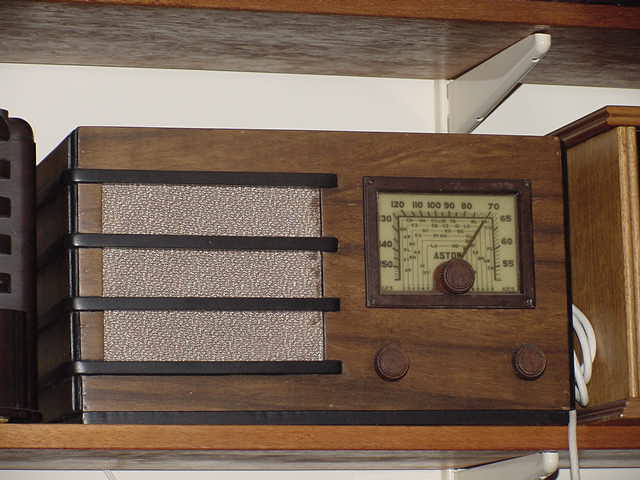 |
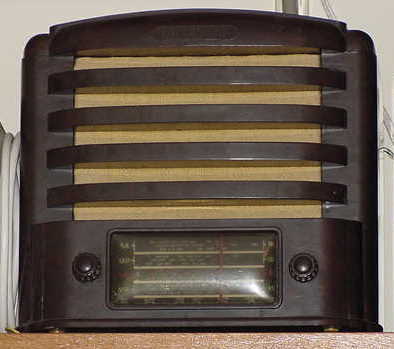 |
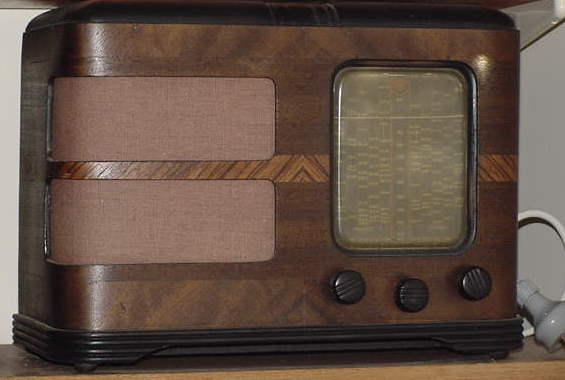 |
STC Code 413. They are mostly 3valve + rectifier radios. |
 |
 |
| Crusader 5 valve bakelite circa 1940 | Unknown 4 valve radio. |
| My first job, straight out of school, was with EMI at their Homebush factory. I was lucky in that I had acquired a good deal of knowledge from reading Radio and Hobbies from cover to cover from issue 1 happily I was transferred from Gopher to work in their radio lab. where I was required to use test and measuring equipment. I was totally delighted and I developed a great interest in test equipment which remains with me today. The unit on the left is a Hewlett Packard 606a Sig Gen and on the right a Boonton 160a Q Meter both excellent instruments for their time. |
 |
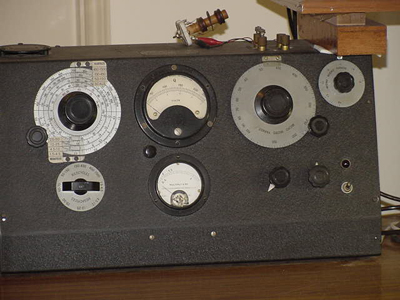 T T |
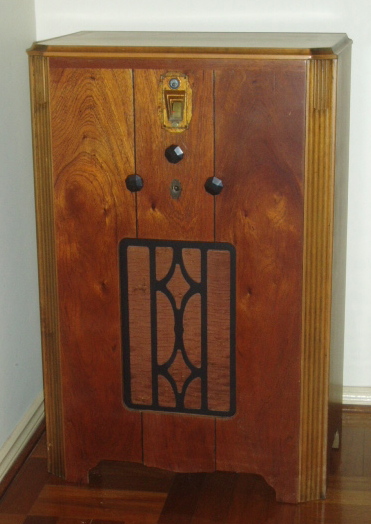 |
STC Model 657 made in 1934.
|